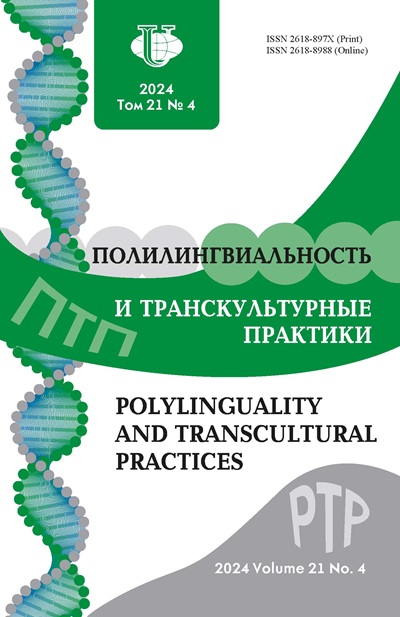Abstract
To clarify possible etymological connections of the Tatar lexeme ik ‘edge, end’ and identify diachronic patterns in synchrony, the author considers a series of lexemes that are similar in semantic and phonetic characteristics (paired ik-şik ‘end and edge’, ǯek ‘seam, joint’, iŋ (*egin) ‘shoulder’, ǯiŋ ‘sleeve’, etc.), designating them as “phonetic-semantic convergences” and combining them into a “phonetic-semantic group” (FSG). There are no special works studying the origin, reasons for the origin of such groups of lexemes, types of relationships between their elements. FSG research could contribute to the analysis of etymologically complex lexemes and the identification of systemic connections in vocabulary, which determines the relevance of work on this issue. In order to study the question of the existence of FSG in other differently structured languages, material from the Basque language was used (lexemes hegi ‘edge, border’, hegal ‘wing, edge’, magal ‘wing, slope’, etc.). Using material from the etymological and other dictionaries of the Tatar, Bashkir, Russian, Basque, Turkic, Altai languages, the basics of the VKtype and part of the derivations of the CVKstructure with initial / j-/ǯ-, m-, ş-, t-/ in Tatar and anlaut / h-, m-/ - in Basque languages. The hypothesis is put forward that phonetic and semantic convergences in the Tatar language may represent related bases established in the form of independent lexemes. Because of the application of a set of methods combining techniques of comparative historical and comparative typological analysis, the author concludes that in the evolution of phonetic and semantic groups, in addition to semantic derivations, phonetic methods of word formation played an essential role. These are Turkic ablaut, synharmonic parallelism (palatalization of the base), reduplication, which are relics of the pre-agglutinative period of the development of the Turkic languages.
















